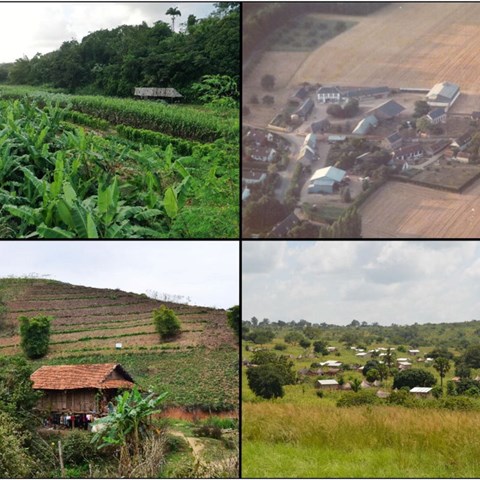Contact
Pierre Chopin
Researcher at the Department of Crop Production Ecology
Visiting address: Ulls väg 16, Uppsala

“The tools that exist to measure sustainability of farms are very diverse, and they are used in very different ways.” Researcher Pierre Chopin has, together with colleagues, compared 119 tools with varying characteristics that are used by researchers to evaluate the impact of management changes on farming sustainability.
If you want to know to what extent a management change improves a farm, in terms of sustainability, you need the right tools to do this evaluation. Pierre Chopin, researcher at the Department of Crop Production Ecology at SLU has, together with colleagues, reviewed 119 such assessment tools to compare their use, sustainability dimensions, themes, and types of indicators they use for biodiversity conservation, farm viability and gender equity.
– In our study we realized that it is possible to combine tools to help the transition of agriculture towards more sustainable forms, says Pierre Chopin.
He thinks that a combination of tools is necessary to really know if one farming system is better than another. A single practice focus on for example “tillage or no tillage” doesn’t alone provide a complete picture of the final impact of the farm.
Pierre Chopin wants this review to provide recommendations to researchers and practitioners when they are assessing the sustainability of farms and farm practices.
– We describe how different sustainability indicators are defined, what type of data that is collected to calculate the indicators, and how the data is collected. Anybody who wants to measure farming sustainability, NGOs for instance, can use the data in our review to see what tools would be the best for them, he says.
Tools using indicators related to resilience of systems to climate change are not developed so much.
– We recommend the use of these kind of indicators in a more systematic manner to assess information on whether or not a farm is prepared to face climate change, for example droughts.
Pierre Chopin and his co-authors also recommend a development of tools that allows the direct involvement of farmers for choosing the indicators that represent a sustainable farm for them.
– It should not only be researchers saying “ok, we think such a farm is sustainable or not”. Farmers and policy makers should also be involved and allowed to share their thoughts on what is a sustainable farm.
Most of the 119 tools are only being used once for a farm. They don’t monitor how the sustainability of a farm is changing over time. If we want to understand how a farm’s impact on the environment is changing, of course we need to follow it over several years to see how it performs.
The article:
Chopin, P., Mubaya, C. P., Descheemaeker, K., Öborn, I., & Bergkvist, G. (2021). Avenues for improving farming sustainability assessment with upgraded tools, sustainability framing and indicators. A review. Agronomy for Sustainable Development, 41(2), 1-20.
Pierre Chopin
Researcher at the Department of Crop Production Ecology
Visiting address: Ulls väg 16, Uppsala